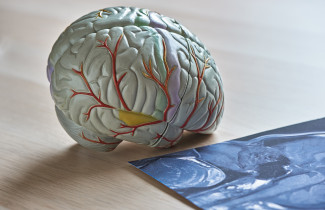The doctoral dissertation in the field of Medical Physics will be examined at the Faculty of Science, Forestry and Technology, online on Zoom.
What is the topic of your doctoral research? Why is it important to study the topic?
My doctoral research is to develop clinical-scale prototype ultrasound-guided hemispherical phased arrays for transcranial focused ultrasound (FUS) therapy, a critical endeavour driven by the escalating demand to address brain tumours and central nervous system diseases. Compared to conventional methods, FUS therapy stands out for its non-invasiveness, non-ionizing nature, and precise brain targeting capabilities.
Furthermore, when combined with ultrasound contrast agents (i.e., microbubbles), FUS has demonstrated the capability to modulate blood-brain barrier permeability and enhance localized drug delivery. This breakthrough can significantly improve treatment efficacy. While existing commercial FUS systems rely on magnetic resonance imaging (MRI) guidance in majority of clinical trials, MRI presents challenges such as limited accessibility, high costs, and insufficient sensitivity for monitoring blood-brain barrier permeability and patient skull temperature during treatment.
Consequently, my research seeks to explore the feasibility of developing a versatile clinical platform primarily based on ultrasound. This platform would perform registration of patient head in pre-treatment stage, skull phase correction and cavitation monitoring during FUS treatment, and super-resolution imaging of cerebral vasculature in post-treatment stage, aiming to enhance the accessibility, accuracy and safety of this cutting-edge technology.
What are the key findings or observations of your doctoral research?
1) Integration of a high-frequency diagnostic array into a therapeutic FUS array enables precise ultrasound-based skull registration, with sub-millimeter errors found in transcranial targeting and source localization, paving the way for MRI-free ultrasound-guided microbubble-mediated FUS brain treatment. Additionally, it has the potential to track skull motion and provide adaptive skull phase corrections during FUS therapy.
2) Multi-frequency hemispherical phased array enables transcranial imaging at both half and the second harmonics. It can induce blood-brain barrier opening with simultaneously spatially microbubble cavitation mapping. This finding demonstrates the potential to implementing cavitation control algorithm in microbubble-mediated FUS brain treatment, ensuring safer modulation of blood-brain barrier permeability.
3) The feasibility of using ultrasound-based resonance methods for detecting heating-induced phase shifts in the skull has been demonstrated. This method has the potential to be integrated with arrays, enabling ultrasound-based adaptive focusing in high-intensity FUS thermal ablation procedures with high accuracy.
4) The low frequency sub-array in a multi-frequency hemispherical phased array is able to modulate nanodroplet vaporization and image three-dimensional cerebral vasculature with passive acoustic mapping and super resolution techniques in vivo. This achievement points toward the potential to enable four-dimensional super-resolution microvasculature imaging and its implement in assessing treatment outcomes following FUS therapy.
How can the results of your doctoral research be utilised in practice?
The multi-frequency hemispherical phased array, integrating both diagnostic and therapeutic arrays, holds significant practical applications in the field of cavitation-mediated transcranial FUS therapy guided by ultrasound. It will benefit targeted drug delivery in the brain. By using this integrated array, medical professionals can precisely deliver drugs to the brain through the targeted modulation of blood-brain barrier permeability. This approach shows promise for treating a range of central nervous system diseases, including primary and metastatic brain tumours, Alzheimer’s disease, and amyotrophic lateral sclerosis. As a result, transcranial FUS therapy becomes more accessible and effective.
In addition, real-time skull phase measurement can be performed. The ultrasound-based resonance method, once integrated into a therapeutic array, is expected to be able to measure skull phase shifts during FUS treatments. This feature is particularly valuable in high-intensity transcranial FUS treatments, where skull bone temperature elevation may occur. Through the linear correlation between skull phase shifts, resonance frequencies, and temperatures, skull temperature can be estimated using the in-situ measured skull phase shifts, which ensures safer and more precise acoustic energy delivery.
What are the key research methods and materials used in your doctoral research?
1) Construction of large aperture phased array
2) Acoustic characterization of the phased array
3) Mapping the cavitation of ultrasound contrast agents
4) Correcting the distortion of ultrasound wave propagating through skull
The doctoral dissertation of Lulu Deng, MSc, entitled Development of Clinical-Scale Prototype Ultrasound-Guided Hemispherical Phased Arrays for Transcranial Focused Ultrasound Therapy will be examined at the Faculty of Science, Forestry and Technology online on Zoom. The opponent will be Professor Cheri Deng, University of Michigan, and the custos will be Professor Kullervo Hynynen, University of Toronto and University of Eastern Finland. Language of the public defence is English.
For more information, please contact:
Lulu Deng, lldeng@sri.utoronto.ca
- Public examination (online on Zoom)
- Dissertation (PDF)
- Photo



